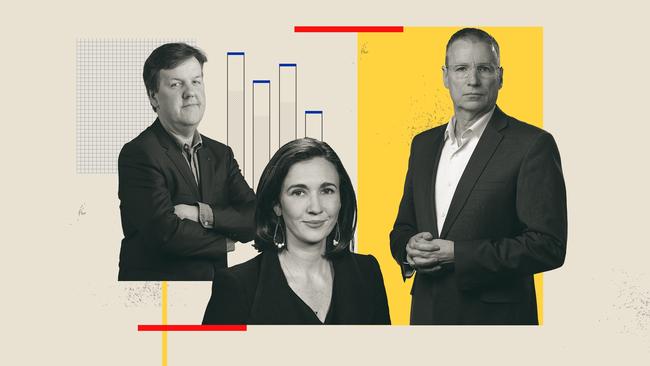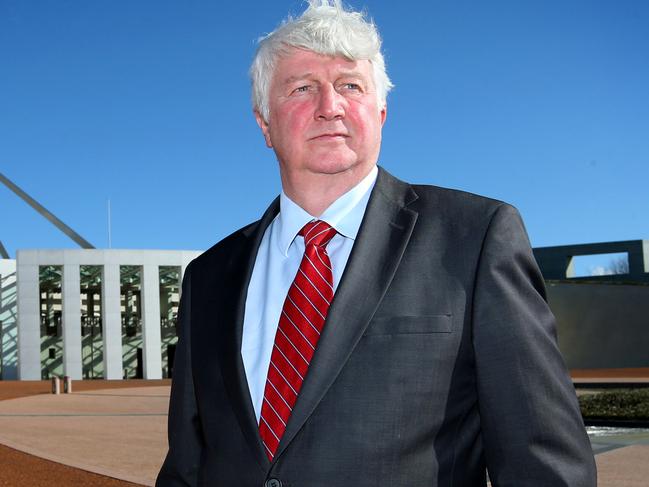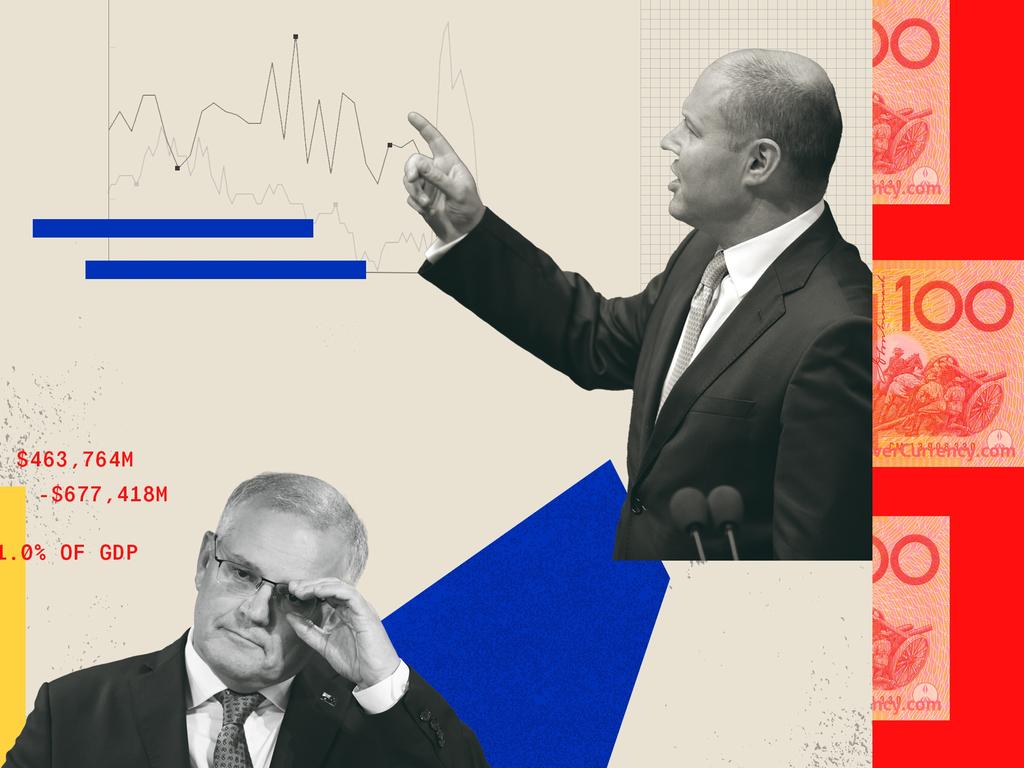Budget 2021: Our experts deliver their verdicts

Dennis Shanahan, National Editor

This is a conflicted budget: torn between competing and contradictory aims that overturn decades of political tradition and economic dictums. The Coalition has turned into a government of debt and deficit with jobs as a priority in the face of a once-in-a-century pandemic and a global recession. After the biggest single fiscal outlay in Australia’s history of $89bn for JobKeeper, which saved two million jobs and another $54bn in new spending, including $17.7bn in structural spending for aged care, Josh Frydenberg’s budget has cast aside the decades-old Liberal mantra of cutting debt and deficit to unashamedly put pandemic recovery and job creation at the heart of the 2021 budget and possibly the 2021 election.
This was the right thing to do in the short term when COVID-19 hit but it’s going to take decades of growth during uncertain times to repair the economic and budget damage.
–
DEBT/DEFICIT VERDICT
Patrick Commins, Economics Correspondent

The “red-hot” economic recovery has left Josh Frydenberg with an extra $110bn than Treasury predicted in December. Tuesday’s budget reveals the Treasurer has spent it. Josh Frydenberg said there would be no “pivot” towards austerity, and this is born out in the numbers. The $503bn in estimated deficits between 2020-21 and 2024-25 in Tuesday’s budget compares to MYEFO’s $512bn – essentially no change. Frydenberg offers no apologies: this is a pandemic budget. COVID-19 remains a threat, and as long as it does, the recovery is not assured, so support is required. Essential services – aged care, mental health – need a boost. The net debt burden will peak around 40 per cent of GDP in 2024-25, but the budget suggests this is not overly burdensome: interest costs are steady at 0.7 per cent a year, thanks to the economy growing at a faster pace than interest rates.
–
AGED CARE VERDICT
Stephen Lunn, Social Affairs Editor

Scott Morrison called the royal commission into aged care, so he must own its damning findings and deliver a strong, sustainable response. This budget goes a long way to doing that, though questions about the sector’s financial sustainability remain.
This budget rightly focuses on improving in-home care, the preferred form of care for older Australians. Bolstering home care packages by a further 80,000 over the next two years to a total of 275,000 will go a long way to easing demand.
It also addresses some of the failings in nursing homes so graphically detailed at the commission, with a $3.2 billion commitment to deliver better care and nutrition through a $10 per resident per day supplement, and from 2023 mandated minimum hours of frontline care.
In terms of broader sustainability, the government has accepted the vast majority of the royal commission’s 148 recommendations, but rejected a levy on income tax to fund aged care. This puts the aged care system at the mercy of the economic climate of the day.
And with a projected 8.8 million Australians aged over 65 by 2058, including 1.5 million over 85, this is an issue that affects us all.
–
WOMEN VERDICT
Rosie Lewis, Political Correspondent

The government could not afford to ignore women in this year’s budget and it made sure to leave several important measures unannounced for the big day. After months of controversy over its treatment of women, it has unveiled a $3.4bn package headlined by a $1.7bn investment in childcare, $5000 emergency assistance for women escaping domestic violence and changes to the superannuation system so employers must pay the super guarantee on earnings less than $450 per month. There are funding measures big and small across safety, financial security and health, with a new focus on the most vulnerable – indigenous Australians, those with disabilities and refugees. The package may not be enough to win back any female voters the government has lost but it offers Scott Morrison a blueprint to show he’s listening and acting. The test will be whether Labor - which is promising more generous childcare and paid parental leave reforms - the crossbench and stakeholders consider the women’s package “business as usual” or new funding that targets the right areas.
–
JOBS VERDICT
Ewin Hannan, Workplace Editor

Josh Frydenberg is promising better news for Australia’s jobless over the next two years, with treasury forecasting the unemployment rate will fall to 5 per cent by June next year and to 4.75 per cent by mid 2023.
But the news for workers hoping for a decent pay rise, after years of flat wages, is not so optimistic.
Treasury predicts annual wages growth will rise to just 1.5 per cent by June next year and only increase to 2.25 per cent by 2022-23, up by 0.25 per cent on previous estimates. In three years, it is tipped to be 2.5 per cent.
After years of the government rebadging skills programs, the dismal failure of last year’s headline-grabbing JobMaker scheme, is a reminder of the need to be sceptical about skills announcements. Seriously, you’d have to be a foundation member of the Coalition cheer squad to accept this year’s promises on apprenticeships and skills will end up being delivered over the forward estimates, given the government’s record.
The biggest surprise in the jobs area is not the recycled promises but the overhaul of employment services from July next year which translates into a $1 billion cut to existing spending on employment services.
-
HEALTH VERDICT
Natasha Robinson, Health Editor

The establishment of a nationwide network of multidisciplinary adult mental health clinics will be the most far-reaching implication for Australian healthcare arising from this Federal budget.
The $487.2 million commitment to establish 40 mental health centres modelled on the multidisciplinary youth headspace clinics addresses the current critical gap in mental health services that has been dubbed “the missing middle”. That refers to the dire problem faced by those with chronic mental ill-health whose conditions are not acute enough to necessitate inpatient hospital care, but whose needs are too complex to be dealt with by a GP or through Medicare-funded psychology. Access to publicly-funded psychiatry outside of the hospital setting or without having to stump up hundreds of dollars per private session is a big win for these patients.
On the COVID-19 front, the big-spending measures under the coronavirus response continue, with additional money now allocated to establish onshore mRNA manufacturing capacity which would be a game-changer for the nation. One of the central assumptions of last year’s budget – that the population would be vaccinated in 2021 – has now shifted to allow for a vaguer timeframe.
While the expansion of breast screen services to allow for publicly-funded mammograms for women aged 70-74 will be welcomed, there will be disappointment that ovarian cancer screening has not been funded despite vigorous lobbying.
It is also disappointing that the government has only funded telehealth for a further six months. Surely it is time to make telehealth funding an ongoing line item in the budget.
Investment in preventive health of $251 million over four years will be seen by the sector as inadequate, but on the plus side the government is finally moving to finalise a ten-year national preventive health strategy.
-
FOREIGN VERDICT
Ben Packham, Foreign Affairs and Defence Correspondent

After years of staffing cuts at the Department of Foreign Affairs and Trade, the government is once again investing in diplomacy.
Chinese coercion and the COVID crisis have prompted the realisation that we as a nation need to better represent our interests abroad, look after our own citizens, and stand up for our friends and partners.
With an additional $198m, the department will hire a forecast 106 additional policy, diplomatic and consulate staff over four years.
They’ll step-up support to businesses who’ve been crushed by Chinese trade bans, and enable Australia to fight harder for democratic ideals in the international arena.
They’ll also help Australia’s Indo-Pacific neighbours to better confront challenges to their sovereignty, as Beijing plies them with offers of unsustainable loans.
It’s a fairly modest investment at this stage, and pales in comparison to sort money the government is throwing Defence.
But it’s long-awaited acknowledgment of the vital role played by DFAT in protecting the nation’s security and prosperity.
–
EDUCATION VERDICT
Tim Dodd, Higher Education Editor

No news is bad news for universities in this year’s budget. Universities would have liked more assistance to offset the continuing decline in international student numbers, support to commercialise their research and spawn new start-up companies, and help to retool themselves to educate students for the new economy. Virtually none of that is forthcoming.
Even worse news for universities and other education providers is the assumption written into the budget that only a handful of international students will return to Australia this year in “small phased programs”, with numbers likely to only “gradually increase” in 2022. This means a full-scale return of international in first semester next year is off the cards.
For universities, this means ever growing seas of red ink in their financial results for the next three years at least. It is also a blow to businesses which previously scooped up a share of the $24bn which, pre-COVID, international students spent each year in the general economy.
Universities will benefit from a $30,000 incentive for each PhD graduate who has a placement with industry, a measure which encourages more research collaboration with business.
The major education initiatives in this budget are the massive preschool push, with $1.6bn allocated in the next four years to ensure every child has 15 hours a week of preschool, and the $500m JobTrainer package to pay for 163,000 low fee and no fee course places for students in areas of skill needs.
–
INFRASTRUCTURE VERDICT
John Ferguson, Associate Editor

It’s an unremarkable, line and length package that reflects the fact so much largesse has already been thrown at the pandemic response.
While the 10 year infrastructure pipeline has grown to $110bn, many in business and state governments will have been hoping for more federal cash to cater for growing cities and changing habits.
The pandemic will shift commuter patterns, as more people opt to drive cars and shun public transport, placing even more pressure on existing roads.
At the same time, the states and the private sector have been doing much of the infrastructure heavy lifting, particularly in the most populated areas.
The Catch-22 for Canberra is that rising debt has given the government less capacity to spend – even if it wanted to seriously address the insatiable demand for more infrastructure.
So what we get is a softly, softly package of targeted but largely small beer projects that will have limited national impact.
–
HOUSING VERDICT
Richard Ferguson, Political Reporter

Josh Frydenberg has done everything he can in this budget to back the runaway success of his HomeBuilder program and he aims to keep the Coalition the number one party for homeowners and those who aspire to be.
This budget will get more single parents and young people into the market by lowering deposit hurdles and letting them redirect some of their super to help get that dream first home.
But Labor will rightly argue there’s little here in terms of increasing social housing and some Liberals will want the Treasurer to go further on “House First, Super second”.
–
BUSINESS VERDICT
John Durie, Senior Business Columnist

The federal government expects business to convert the economic recovery into an investment boom but has offered little in the way of specific investments or structural reform with the main vehicle being the extension of immediate expensing of new spending and loss carry back provisions beyond small business.
Business investment is at 28-year lows but increased confidence is tipped to turn a 6.5 per cent COVID slump into a 12.5 per cent increase in the 2023 financial year creating $320 billion of spending and 60,000 new jobs.
All the evidence supports the hope but it hasn’t happened yet.
Business is a beneficiary of the $291 billion in government COVID support and the rapid recovery in the economy but beyond relief wanted more structural support.
–







BUDGET VERDICT